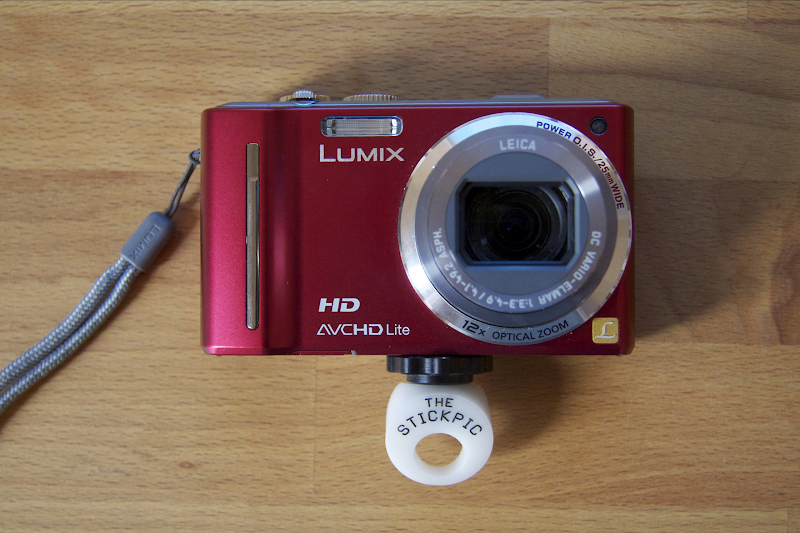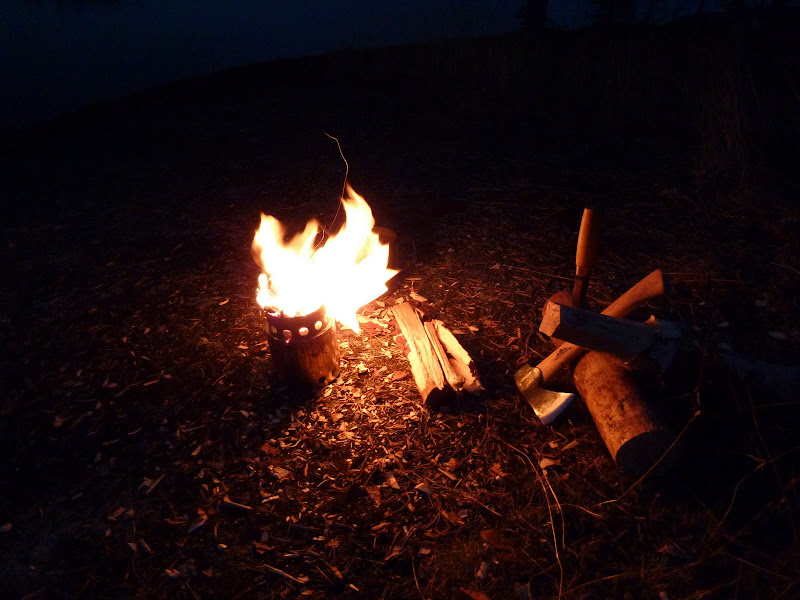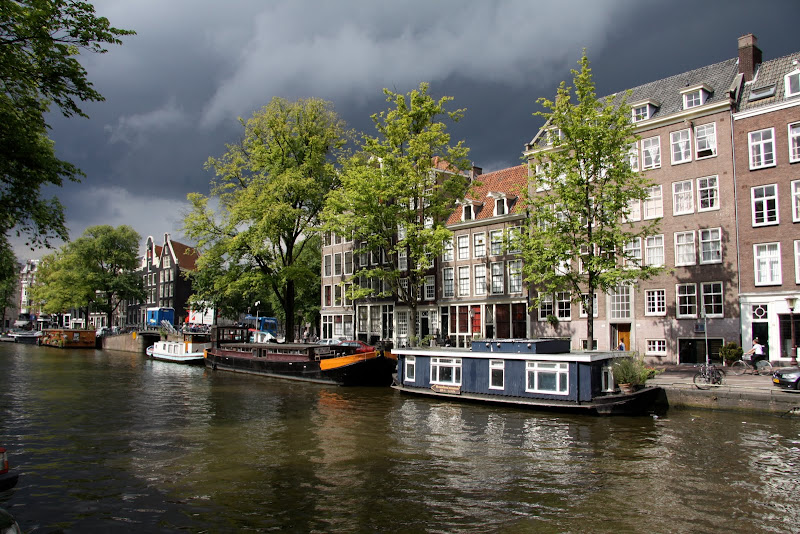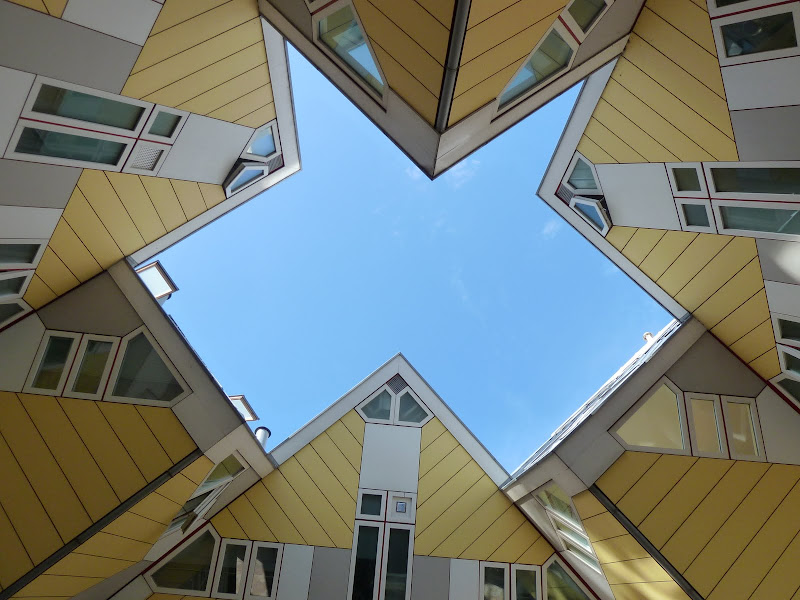I'm a DSLR kind-of-guy. The options available in shooting with a DSLR, as the ability to compose a photo with a real viewfinder, different lenses and a bunch of settings usually make me take my Canon 50D on trips. But then there is the weight, and seeing to what effects some point-and-shots are used, which made me reconsider. This is the story of how I found a compact camera which I feel comfortable taking into the outdoors, knowing that I can bring superb photos and HD videos back home.

Earlier this year I started to leave my Canon 50D at home in favour of the Panasonic Lumix GF1, a small size DSLR but with big skills. After returning the GF1 I got so used to the light weight around my neck, that using the 50D again seemed odd. Was I thus ready to step on step further down and try point-and-shots? As a dedicated UL backpacker and traveller, the answer was yes. A suitable camera was quickly found, as the likes of Joe Newton, Peter MacFarlane and Martin Rye have used a Lumix compact camera to great lengths on their trips, taking superb photos with a camera which is both compact and light. An email was written, a business trip to Helsinki was combined with a visit, and I took home a Panasonic Lumix DMC-TZ10.

Weights:
195 g TZ-10 body
022 g TZ-10 battery
001 g SDHC 8 gb memory card
218 g Total
If I compare that with the weight of the Canon 50D or even the GF1, it is so much lighter, and way more compact = Win. But can it take excellent photos? Lets see:

The amount of detail the TZ10 can capture is fabulous, check the printing on this flyer.

It also can handle fire shots like these just perfectly.

Misty mornings by the lake: Full marks.




Close-ups: Check.



Occasional holiday photos: Superb.
So far, so good. So what is special about it? Well, for one it geo-tags your photos with the GPS coordinates they were taken, and in case they were taken at a special location, like the National Opera in Oslo, for example, it will even be able to name the structure. Sweet, I hear you say, and I concur. Never again arguments with the significant other/ backpacking buddy where exactly the photo was taken - a look at the coordinates, for example in Picasa, and the mystery is solved. Some people think the GPS function drains the battery, which is, hmm, "true". I can go on a weekend backpacking trip without a second battery and come home with the camera still working, but more than that and it gets critical and a second battery is advisable.

In this screenshot from a photo uploaded on Picasa, you can see on the right the geo-tag. It is very accurate!

Back of the TZ10. Display mode in raster is the most useful, as it helps you to compose photos very well.
But that ain't all - as if superb, geo-tagged photos from afar and close-up wouldn't be enough, no, Panasonic decided to throw in a 720p HD video recording with stereo function. Pretty much all the videos I took during the last weeks were taken with the TZ10, and let me tell you that it does take superb videos, as the example underneath shows:
The layout of the camera is good, all buttons are easily reached, with exception of the video record button, which, while sitting a tad deeper, still got pushed the occasional time, but apart from that, a solid layout. The screen has gathered a couple of "Ohhhs!" and "Ahhhhs!", so sharp are the pictures on it. Panasonic also allows you to put the flash off forever, full marks for that. Deleting photos, single or multiple, goes quick and easy. The TZ10 has 12x Optical Zoom, but I honestly can't have used it more than half a dozen times, the 25 mm wide angle lens is perfect for my needs (landscape, macro, mostly).
The TZ10 has a manual exposure control, with aperture priority, shutter priority and full manual exposure. I played around with these - you'll need them for night shots - but I also think the "Intelligent Auto" does a decent job if you can't be bothered. Some of the above photos were shot with iA, and in my opinion they look as good as those shot on Manual. It doesn't do RAW, only JPEG, that's a little trouble if you like to edit in Lightroom 3, but not a dealbreaker (you can edit other formats than RAW in Lightroom 3!).

The two apps I use to edit and share photos.
Before I sum it up, a few quick words on editing. I use Photogene on the iPad, as the intuitive and easy to use interface is superb. After editing I could upload directly from the app to Flickr, though as I am a Picasa user I use Photo Share to upload the edited photos. If you're an iPad user (and trust me, the iPad rocks - I replaced my MacBook with it) and do any photo editing at all, consider investing the less than 4€ for those two apps.

Editing in Photogene.

Sharing with Photo Share.
Well, how to round this up? I need to return, with much sadness, I have to admit, the TZ10 again, as it was only a loan. Yesterday I took product shots for my significant other - she's a graphic designer - and as I wasn't able to get the 50D to cooperate, I took the TZ10 out and started taking photos. The small camera had no problems and did what I wanted it to do, resulting in such good photos that I was immediately entrusted with more work! I guess that means that if the TZ 10 is able to reach the high standards of a graphic designer, and at the same time is able to satisfy the heart of a UL backpacker who likes to take good photos, then the TZ10 can't be a bad deal. It is a great package, taking excellent photos, HD videos, geo-tagging both and does always cooperate, without grumbling. If you're in the market for a new camera, click the link underneath and give yourself an early present! To conclude, I reckon it means that I am not that much of an DSLR kind-of-guy after all =)
Disclosure: I have a Amazon Affiliate account and might earn something if you click and buy from above.

Earlier this year I started to leave my Canon 50D at home in favour of the Panasonic Lumix GF1, a small size DSLR but with big skills. After returning the GF1 I got so used to the light weight around my neck, that using the 50D again seemed odd. Was I thus ready to step on step further down and try point-and-shots? As a dedicated UL backpacker and traveller, the answer was yes. A suitable camera was quickly found, as the likes of Joe Newton, Peter MacFarlane and Martin Rye have used a Lumix compact camera to great lengths on their trips, taking superb photos with a camera which is both compact and light. An email was written, a business trip to Helsinki was combined with a visit, and I took home a Panasonic Lumix DMC-TZ10.

Weights:
195 g TZ-10 body
022 g TZ-10 battery
001 g SDHC 8 gb memory card
218 g Total
If I compare that with the weight of the Canon 50D or even the GF1, it is so much lighter, and way more compact = Win. But can it take excellent photos? Lets see:

The amount of detail the TZ10 can capture is fabulous, check the printing on this flyer.
It also can handle fire shots like these just perfectly.

Misty mornings by the lake: Full marks.

Close-ups: Check.
Occasional holiday photos: Superb.
So far, so good. So what is special about it? Well, for one it geo-tags your photos with the GPS coordinates they were taken, and in case they were taken at a special location, like the National Opera in Oslo, for example, it will even be able to name the structure. Sweet, I hear you say, and I concur. Never again arguments with the significant other/ backpacking buddy where exactly the photo was taken - a look at the coordinates, for example in Picasa, and the mystery is solved. Some people think the GPS function drains the battery, which is, hmm, "true". I can go on a weekend backpacking trip without a second battery and come home with the camera still working, but more than that and it gets critical and a second battery is advisable.

In this screenshot from a photo uploaded on Picasa, you can see on the right the geo-tag. It is very accurate!

Back of the TZ10. Display mode in raster is the most useful, as it helps you to compose photos very well.
But that ain't all - as if superb, geo-tagged photos from afar and close-up wouldn't be enough, no, Panasonic decided to throw in a 720p HD video recording with stereo function. Pretty much all the videos I took during the last weeks were taken with the TZ10, and let me tell you that it does take superb videos, as the example underneath shows:
The layout of the camera is good, all buttons are easily reached, with exception of the video record button, which, while sitting a tad deeper, still got pushed the occasional time, but apart from that, a solid layout. The screen has gathered a couple of "Ohhhs!" and "Ahhhhs!", so sharp are the pictures on it. Panasonic also allows you to put the flash off forever, full marks for that. Deleting photos, single or multiple, goes quick and easy. The TZ10 has 12x Optical Zoom, but I honestly can't have used it more than half a dozen times, the 25 mm wide angle lens is perfect for my needs (landscape, macro, mostly).
The TZ10 has a manual exposure control, with aperture priority, shutter priority and full manual exposure. I played around with these - you'll need them for night shots - but I also think the "Intelligent Auto" does a decent job if you can't be bothered. Some of the above photos were shot with iA, and in my opinion they look as good as those shot on Manual. It doesn't do RAW, only JPEG, that's a little trouble if you like to edit in Lightroom 3, but not a dealbreaker (you can edit other formats than RAW in Lightroom 3!).

The two apps I use to edit and share photos.
Before I sum it up, a few quick words on editing. I use Photogene on the iPad, as the intuitive and easy to use interface is superb. After editing I could upload directly from the app to Flickr, though as I am a Picasa user I use Photo Share to upload the edited photos. If you're an iPad user (and trust me, the iPad rocks - I replaced my MacBook with it) and do any photo editing at all, consider investing the less than 4€ for those two apps.

Editing in Photogene.

Sharing with Photo Share.
Well, how to round this up? I need to return, with much sadness, I have to admit, the TZ10 again, as it was only a loan. Yesterday I took product shots for my significant other - she's a graphic designer - and as I wasn't able to get the 50D to cooperate, I took the TZ10 out and started taking photos. The small camera had no problems and did what I wanted it to do, resulting in such good photos that I was immediately entrusted with more work! I guess that means that if the TZ 10 is able to reach the high standards of a graphic designer, and at the same time is able to satisfy the heart of a UL backpacker who likes to take good photos, then the TZ10 can't be a bad deal. It is a great package, taking excellent photos, HD videos, geo-tagging both and does always cooperate, without grumbling. If you're in the market for a new camera, click the link underneath and give yourself an early present! To conclude, I reckon it means that I am not that much of an DSLR kind-of-guy after all =)
Disclosure: I have a Amazon Affiliate account and might earn something if you click and buy from above.